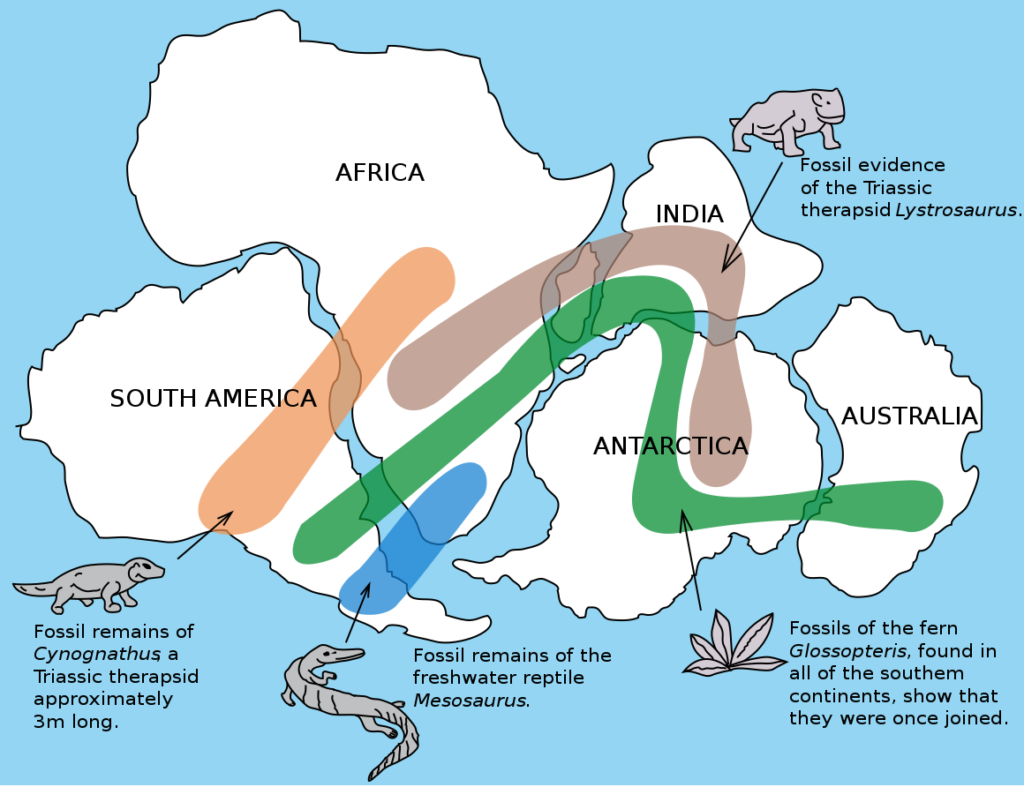By dating rocks and fossils scientists can document the movement of the continents over time.
To confirm and refine this science, geologists study rocks, paleontologists study fossils, and anthropologists study human societies, cultures, and relics. The location and dating of rocks, fossils, and relics allow us to understand the distant past.
- Cynognathus, circa 242 million BCE
- Lystrosaurus, circa 250 million BCE
- Glossopteris, circa 275 million BCE
- Mesosaurus, circa 285 million BCE



















